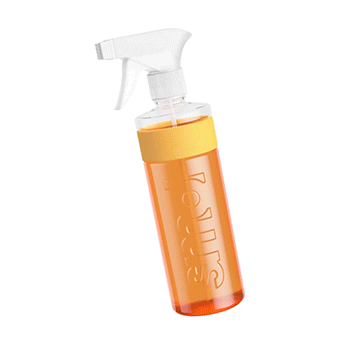
March 2023 saw some interesting info come out of our laundry deep dive; courtesy of our fabulous smol circle members who really spilled the beans on their dirty washing details.
And one thing that really stood out was the giant impact tiny tots have on our laundry schedules.
little ones = big loads.
A survey by smol found that 82% of households that have children are running their washing machine at least 4 times a week. What’s more, 25% are actually running it 7 times a week. No wonder the laundry can feel like a never ending task!
And when we look at those child-free households, only 39% report running their machine 4 times or more a week.
and the detergent of choice…
It appears as though having children in your household means you are much more likely to use a non-bio detergent than a bio because 65% of households that have kids have opted for the former.
And if you’re not sure of the difference?
Bio detergents contain enzymes which are really great at removing stains. They also work really well in lower temperatures and quick washes (which is better for the environment and is going to save you money). So if you don’t have particularly sensitive skin, and you don’t have little ones to wash for, we usually recommend our smol bio capsules.
Non-bio detergents do NOT have enzymes. If you have sensitive skin (eczema, psoriasis) or young children, we usually recommend smol non-bio capsules. Non-bio detergents are really popular in the UK. The stain-removing enzymes in bio detergent can, rarely, cause mild irritation for those with sensitive skin, so a non-bio (which doesn’t have these enzymes) can be the better choice for those with skin sensitivities.
You can read more about the difference between bio and non-bio here.
the worst thing…
Of course our kids bring us joy but they are clearly also bringing us laundry. So what do we dislike the MOST about this ongoing household chore? Top complaints included:
-
Having to fold and put it away
-
Struggling to get stuff dry
-
Ironing.
We can all relate!

ways to not wash.
So even in those really busy households how about a few smol ways to cut the laundry load? Check out these 5 top tips.
1. spray away.
Pop a couple of pumps of our animal-fat free fabric conditioner into an empty spray bottle filled with water. Give it a shake and spritz onto your little ones’ clothes and bedding. They’ll smell fresh and fabulous again in no time and it’s perfect for hardier fabrics and jumpers that don't *quite* need a wash yet.
2. freezy does it.
This is useful for items like jeans. Just pop them in a freezer bag and place them in the freezer overnight. The much lower temperatures will kill bacteria that can cause unwanted odours in your kids clothing so why not give it a try?
3. just hang out.
Nothing breathes new life into kids' clothes like a blast of fresh air. If you don’t have access to an outside line simply hang items in front of an open window. Air moving through clothing is a great way to refresh fabrics and the added bonus of sunlight kills bacteria so it’s a win-win scenario and completely FREE!
4. get steamy.
Running an iron over clothing not only gets rid of any creases (a tell-tale sign it’s already been worn)… but it will also kill off bacteria that could be causing odours. If you are having a shower you can also hang your clothing in the bathroom. Any steam will cause the fibres in the fabric to relax and this basically helps release any smells from the threads. No iron required!
5. hit the spot.
Sometimes our kids’ clothing doesn’t need a full wash… just a little targeted attention. Spot cleaning stained areas only with a clean damp cloth and our super smol stain gel is often all that’s needed to bring an item back up to scratch. Wet the area of concern then apply a couple of pumps of stain gel and rub gently into the mark. Leave for a couple of minutes and then rinse with clean cold water. Hey presto, no-wash washing just got real!
#washwell.
One key way we can use our machines less is by scrapping any half loads of laundry we might do. We know that 49% of people run their washing machines when they are not actually full at least once every week.*
Half loads of laundry use more than half the energy and water of a full load so they really aren’t saving us anything and it becomes an expensive way to gain just a few clean items. Just running our machine when it’s full could cut the number of times we are washing quite dramatically.
It’s easy to gauge a full load with our handy measuring tip. Simply leave a palm’s width between the top of your laundry and the top inside of the drum (any less and the washing won’t have room to clean). If there’s more space than the width of your palm then you know you’re not fully-loaded.
Finally, if you want to discover what your laundry loads are costing you check out our fun and interactive wash-o-meter and find out where you can make some surprising savings!
* Research from The BrandBean 2020









